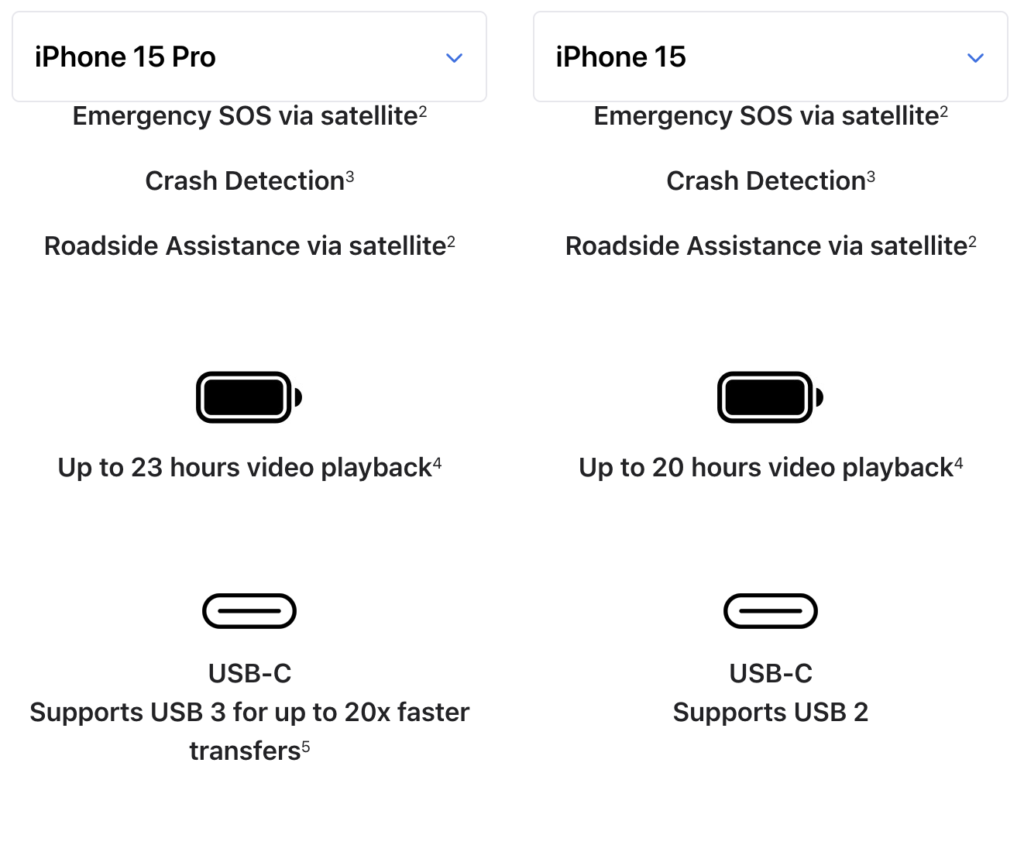It is a day after yet another Apple September Event and here we are left with the illusion of choice. Let me elaborate. This is not going to be an in-depth analysis of iPhone 15 vs. iPhone 15 Pro. Let’s call this rubric “midnight thoughts”, even though it is not midnight.
Back in 2017, Apple introduced a two-tiered approach to iPhone sales. They introduced the iPhone 8 with a more “advanced” iPhone X. Since then, with every new iPhone release, two models have been introduced with the only difference between the regular and “pro” models being artificially limited functions, since in most cases, the internals are identical.
Except this year, iPhone 15 and iPhone 15 Pro are different not just in display tech and finish materials, but the iPhone 15 Pro actually has a Pro-labeled SoC, with a heavy lean into gaming performance, GPU performance, and a vastly improved camera, addressing some of the shortcomings of previous versions.
Most importantly, Apple finally ditched the Lightning connector in their iPhones, which was introduced with the iPhone 5 during the September 2012 event. If you are like me, you find this liberating. At last, you can carry one cable and charge your laptop and phone and a heap of other devices with a single cable. This is great news!

Except, if you watched the event and saw the discussion of features, you would notice that Apple mentioned USB-C with USB 3 speeds, only when they talked about iPhone 15 Pro. Which in Apple world means exclusive feature to that model only. Which in turn means iPhone 15 USB C is USB 2.0 standard only. A transfer standard that is 23 years old!
Imagine dropping $1100 for 512GB iPhone 15 and after a few weeks of 4K video recording, having to spend 2 hours and 40 minutes to offload the footage to your PC/Mac. Whereas it will only take 15 minutes to offload the same file size using the USB 3 protocol. And all of that for a low low price of $1300. That is a $200 premium for a protocol that is 15 years old at this point! And this is being pitched as an advanced, “Pro” feature.

This is what I mean by the illusion of choice. If you really want something that offers an actual, meaningful upgrade with features that matter, you have no choice by to upgrade to their “Pro” models, automatically having to pay a premium for a pro moniker. Or settle for a “new” non-pro model, that is essentially a slightly upgraded or identical version from last year’s model.